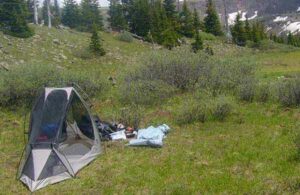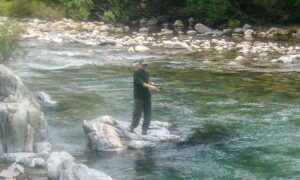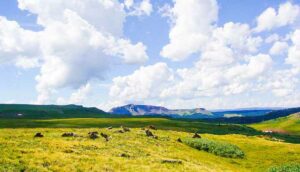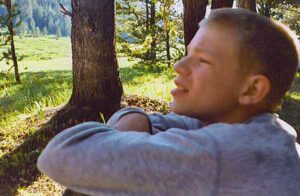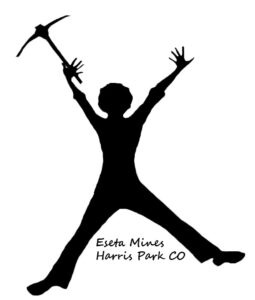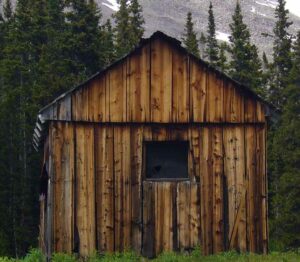OUTWESTWOODS

Tips and Tricks 15-21
After dedicating over 25 years to the art of backpacking, I have amassed a wealth of knowledge, uncovering numerous tricks and techniques to ensure my safety, maximize efficiency, and enhance the overall enjoyment of my adventures.
Allow me to share with you some of my favorite backpacking tips and tricks that have stood the test of time.
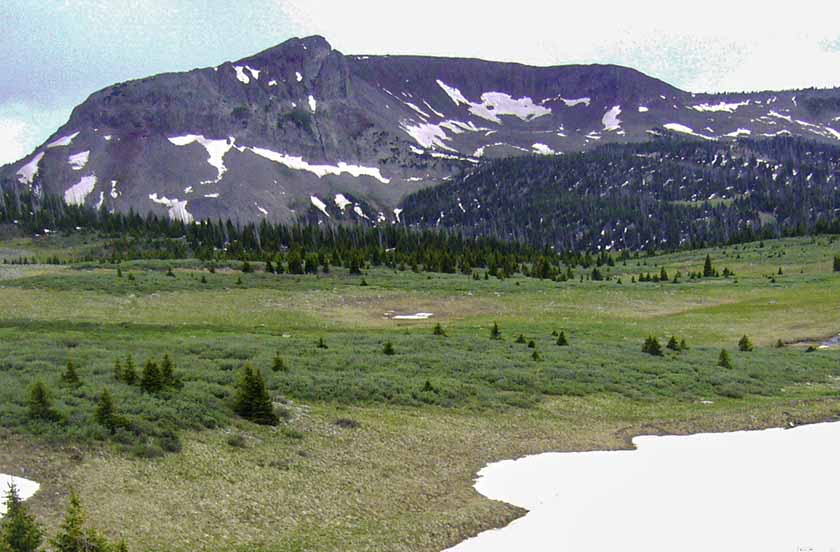
Shingle Peak, CO.
Arguably the most remote mountain in Colorado.
Tip #15 - Snow will be around till 4th of July in CO
One of my favorite times to go backpacking in Colorado or the Rockies is during the July 4th weekend. Generally, though not always, most of the snow has melted below tree line by this time.
During this period, the trails are typically open for exploration. However, it’s always wise to check beforehand because every now and then, about 1 out of every 6 or 7 years, there might be an exceptionally heavy winter snowfall or a cool spring that prolongs the presence of snow by a couple of extra weeks.
Personally, I find a touch of snow quite enjoyable during this time. The bugs are just emerging, and the fishing is excellent as the ice is melting off the lakes.
If you come across any remaining snow, it can serve multiple purposes. You can use it to chill your drinks or even create a refreshing ice slushy, which is truly delightful!
There’s nothing quite like savoring a flavored ice slushy while embarking on a week-long backpacking adventure.

What it looked like near Holy Cross Mtn,CO 4th July weekend that year.

Tip #16 - Rice does not cook easy at high altitude
It is true that as you ascend to higher altitudes, cooking rice or any food requires more fuel and time. This is due to the fact that water boils at a lower temperature and evaporates more quickly at higher elevations.
In my experience, trying to cook rice at 10,000 feet becomes quite challenging, and the results may not be satisfactory. Therefore, I personally recommend skipping rice altogether during your backpacking trips at such altitudes, as the effort involved may not be worth it.
Instead, I suggest opting for noodle meals, which tend to cook more easily and quickly at higher elevations. The good news is that you don’t necessarily need to invest in expensive backpacking meals.
Nowadays, there are plenty of affordable dehydrated meal options available at your local supermarket that can be suitable for your outdoor adventures.
Tip #17 - Throw sand on wet log, rocks when crossing
When it comes to choosing boots for outdoor activities, I personally prefer ones with a hard sole. However, one downside I’ve noticed is that they can be a bit slippery on wet rocks or logs when crossing streams.
To counter this issue, I’ve discovered a simple trick that adds extra friction. Before stepping onto a wet surface, I throw some dirt or sand onto the sole of my boot. This helps create traction and reduces the chances of slipping.
Additionally, using a walking stick can also be beneficial in maintaining balance and stability while crossing streams or navigating challenging terrain. It provides an extra point of contact and can help distribute weight more evenly, minimizing the risk of slipping.
By employing these techniques, you can enhance your safety and confidence when traversing wet or slippery surfaces during your outdoor adventures.

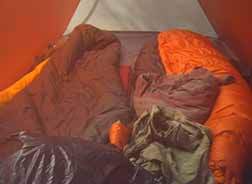
Tip #18 - Fluff up bag at night
It can indeed get quite cold in the high altitudes of the Rockies, and taking measures to stay warm is essential. One trick I’ve learned is to fluff up both our sleeping bags each time we wake up, especially when I’m with my son. This simple action helps create additional air pockets, which provide insulation and keep us warmer throughout the night.
To retain body heat, wearing a stocking hat and possibly thin gloves at night is often comfortable. The hat serves a dual purpose of allowing me to position my tent in the early morning sun while shielding my eyes from the bright light.
Another effective way to raise body temperature before bed is to enjoy a hot drink. This not only provides a comforting and soothing experience but also helps elevate our core temperature, ensuring a warmer sleep.
Tip #19 - Mountain lions
Mountain lions found in the Rockies are not known to be “man-eaters” like their counterparts in Africa. These majestic creatures are intelligent and elusive, making mountain lion attacks extremely rare. In fact, the number of deaths caused by mountain lions is even lower than those resulting from bear attacks. Over the past 30 years in Colorado, there have been only 16 documented mountain lion attacks, with 3 fatalities. Throughout North America, there have been 27 fatal attacks in the past century. These statistics indicate that mountain lion encounters are rarer than lightning strikes or even bee stings.
It is important to note that small children are more vulnerable to mountain lion encounters, and a majority of the fatalities involve child victims. To ensure their safety, it is advised not to allow young children to roam alone in wooded areas where they could be mistaken for prey by a mountain lion.
Personally, when I walk through the woods, even at night, I embrace the opportunity to photograph a mountain lion. I do not fear their presence, as they are generally not a threat when encountered with respect and caution.


Tip 20 - Start early
When spending a few days in the woods, I’ve noticed a shift in various aspects of my being, as if reconnecting with the ancient rhythms of human evolution.
Although I’m not typically a morning person, my sleep habits adjust naturally in the wilderness. The coolness of the evening and the early sunset prompt me to retire to bed earlier than usual. And there are compelling reasons to rise early in the woods: the refreshing air, dormant bugs, clear skies, and gentle morning sun create the perfect conditions for an invigorating hike.
Beyond sleep patterns, many other transformations occur during my backpacking experience, away from the noise of the modern world for a couple of days.
Initially, the first day or two may feel somewhat dull, as I adapt to the vast green tranquility of the woods without the distractions of television, phones, social media, and news. However, as time passes, this external noise gradually fades away, allowing the essence of 100,000 years of human evolution to flow back into my being.
One of the most remarkable aspects of backpacking for several days is witnessing this reconnection. My sleep becomes deeper, dreams more vivid, and my senses of taste and smell intensify. I find myself fully immersed in the present moment, attuned to the minute details of the surrounding woods.
At a certain point, when my thoughts turn to “going home,” I realize that my true home lies within the confines of my tent, not the walls of a house. It is then that I know I have entered a state of harmony with the OutWestWoods. I sincerely hope that everyone has the opportunity to experience this profound connection with nature at least once in their lifetime.
Tip #21 - Going down harder than going up
When embarking on a hike up a Colorado mountain, you’ll quickly notice that ascending becomes more challenging due to the thin air, making it difficult to catch your breath. Conversely, descending with a heavy pack can take a toll on your body’s strength as you fight against gravity.
While climbing uphill, it’s primarily your lungs that come into play, and you find yourself taking frequent breaks to restore your breath. To manage the uphill trek, I strive to maintain a pace that keeps my heart rate and breath under control, as an overworked heart and lungs demand even more energy.
However, after a day of uphill climbing with a backpack, descending can fatigue your legs faster than your lungs. This is where caution is crucial, especially when navigating downhill trails with a heavy load. The real danger lies in tripping over a rock, stumbling, and falling several feet, potentially striking your head on another rock. It’s incidents like these that can prove fatal.
In addition to safety concerns, I have another objective while walking through the woods: to maintain a quiet and gentle stride. There are two main reasons for this approach. Firstly, by moving quietly, I increase my chances of capturing wildlife moments with my camera, as the subtle approach doesn’t startle or alert animals to my presence. Secondly, walking softly has the added benefit that, if by any chance I twist my ankle or stumble, I’m more likely to catch myself and prevent a hard fall compared to if I were stomping loudly.
By being mindful of the terrain, taking necessary precautions on descents, and adopting a quieter stride, I can enhance both my safety and the potential for capturing memorable encounters with nature during my hikes.
Tricks and Tips Continued
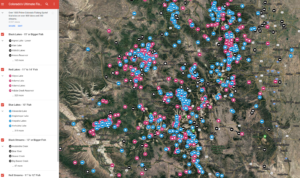
Much More To Discover At OutWestWoods
Discover essential tips for your outdoor adventures in Colorado’s backcountry:
Backpack Equipment List: Get a comprehensive checklist for your backcountry backpacking needs.
Ultra-Light Fishing: Learn a lightweight fishing technique tailored for Colorado’s wilderness.
Must-Visit Places: Explore remarkable destinations in Colorado’s backcountry.
Safety Tips and Tricks: Stay secure with valuable insights on outdoor safety.
Enjoy your Colorado adventure with these handy tips!
With decades of experience, I’ve crafted the ultimate backpacking equipment list for Colorado’s high country.
Discover the perfect fishing experience in Colorado’s small mountain streams with ultra-light lure fishing techniques. Learn my tried and tested methods for guaranteed success.
Experience the wonder of my extensive backpacking adventures in Colorado’s high country. Countless hours of research and exploration led me to discover some truly amazing locations.
Embark on a journey through my extensive backpacking adventures in Colorado’s high country. Countless hours of research and exploration unveiled truly amazing locations that will leave you in awe.
Please see Eseta Mines for jewelry, displays, crystals, mine tours, mine location and filing services.
